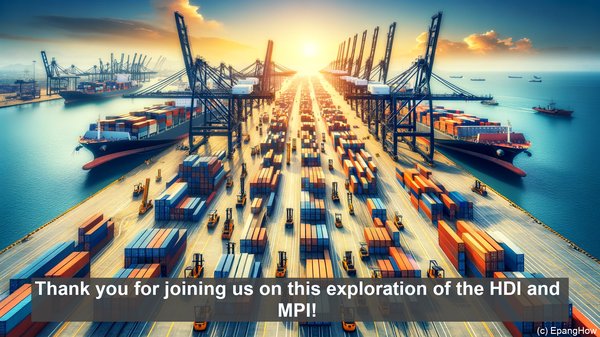Introduction: Measuring Development
Hello everyone! When it comes to measuring development, there are several indices that come into play. Two prominent ones are the Human Development Index (HDI) and the Multidimensional Poverty Index (MPI). While both aim to assess the well-being of nations, they do so in different ways. Let’s dive deeper!
The Human Development Index (HDI)
The HDI, developed by the United Nations Development Programme (UNDP), has been a widely used measure since its inception in 1990. It takes into account three dimensions: health, education, and income. By considering life expectancy, years of schooling, and Gross National Income (GNI) per capita, the HDI provides a comprehensive snapshot of a country’s development. It uses a scale from 0 to 1, with 1 representing the highest level of development.
The Multidimensional Poverty Index (MPI)
In contrast, the MPI, introduced by the UNDP and the Oxford Poverty and Human Development Initiative (OPHI) in 2010, offers a more nuanced perspective. It recognizes that poverty is not solely about income but also encompasses various deprivations. The MPI looks at ten indicators across three dimensions: health, education, and standard of living. These indicators include nutrition, child mortality, years of schooling, and access to clean water and electricity. A person is considered multidimensionally poor if they are deprived in at least one-third of the weighted indicators. The MPI provides a percentage value, with higher values indicating higher levels of poverty.
Different Approaches, Different Insights
While the HDI focuses on the overall development of a country, the MPI delves into the specific aspects of poverty. The HDI’s emphasis on income can sometimes overlook other deprivations that individuals may face. On the other hand, the MPI’s multidimensional approach provides a more holistic view, capturing the complexities of poverty. By using both indices together, policymakers and researchers can gain a more comprehensive understanding of a nation’s well-being.

Global Comparisons
When it comes to comparing countries, the HDI is often the go-to index. It allows for easy rankings and comparisons, showcasing which nations are leading in terms of development. However, the MPI adds another layer of analysis. It highlights the variations within countries, revealing pockets of severe poverty that may not be immediately apparent through income-based measures alone. This information is crucial for targeted interventions and policies.

